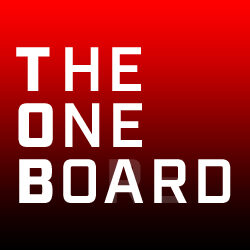The long-awaited, not-on-the-cover-and-doesn’t-even-get-a-cover-line, buried-in-two-spreads-after-the-ball-reviews announcement of the 87th Bowlers Journal International All-American Teams is finally hitting mailboxes, letting us all reflect on the best players in the world during the 2024-2025 season.
Wait… 2024 and 2025 seasons? Or 2024 or 2025 seasons? Best players in the world on an All-American Team? An 87th edition with no fanfare, unless we count the table of contents? What ball should I throw in game two of week three of league?
Don’t worry. We’re here to explain all the mysteries surrounding the annual All-American Teams, which used to command covers and be an event. Now, and this is total speculation having witnessed the de-prioritizing of the AAT over the past several years, it appears as if Bowlers Journal is trying to hold on to the tradition (87 straight years is impressive) while realizing the overwhelming number of qualifications they now have to explain to even justify listing names is perhaps becoming unnecessary. Again, this is speculation, which as we all know is one of the bowling community’s favorite pastimes.
To eliminate any confusion, let’s answer all the most popular questions:
Why are there non-Americans on the All-American Teams?
Eighty-seven years ago, all the top bowlers covered by the American magazine were Americans. Along the lines of the NCAA All-American teams in various sports (first done in 1889), Bowlers Journal decided to honor the best players in the country with, reasonably enough, an All-American distinction. The first time Bowlers Journal claims to have formally done this was in 1938, although of course this comes with an asterisk as there is a record of the magazine also naming and publishing some form of this type of team for 1926, 1927, 1929 and 1931-32. See? It’s making more sense already.
Once non-Americans started asserting themselves in United States bowling competition, they obviously deserved recognition too. Bowlers Journal had to clarify the All-American Team features those players who best perform in America, regardless of where those players live or were born. Sensible enough; the infallible NCAA does something similar with their teams. The most important thing is recognizing the best players.
Okay, but then why is Jesper Svensson’s 2024 title he won in Sweden mentioned as justification for his selection this year, which, by the way, is 2025?
As established, Svensson’s Swedish citizenship doesn’t preclude him from being a BJI All-American (his current honor is actually the sixth of his career). And, although the teams are based on performance in the United States and one of Svensson’s three titles during the selection period was won in Sweden, that title counted as a PBA Tour title, which is primarily U.S.-based and… no need to insult your intelligence and explain further. In short: the Swedish player who won a title in Sweden is undoubtedly one of the best American bowlers in America.
Makes sense, but again, why do the 2025 teams talk about 2024 stats?
This is because of the selection window, which naturally runs from June 16, 2024 through June 15, 2025. Obviously. And before you ask in a heading, yes, the PBA Tour moved to a calendar-year season in 2014 and yes, the PWBA Tour has taken place over the course of a few summer months every year since 2015 after a 12-year hiatus while not existing at all. It only makes sense that a full decade after both major tours were bowling their entire seasons in a calendar year, an All-American Team would remain a June-to-June affair.
For this year’s teams, that means the men’s team selections were based on three events from 2024 (a mixed doubles event, a mixed trios event and an American event in Sweden) through the entire 2025 season and the women’s team selections were based on the penultimate day of 2024 U.S. Women’s Open competition through the back half of the 2024 season (including the afore-mentioned mixed doubles and mixed trios events) and through the first several events of 2025 up to but not including the U.S. Women’s Open stepladder finals. Between the 2024 U.S. Women’s Open finals and the 2025 qualifying, we’re almost covering an entire major title there.
This also explains 2024 U.S. Women’s Open champion Sin Li Jane’s All-American Team captaincy—though she likely would’ve had that anyway—but only second-team honors for 2025 U.S. Women’s Open champion New Hui Fen, whose 2025 title on day one of the presumed 2025-2026 selection window immediately put her in the lead for next year’s first team.
Yeah, but, why?
This is bowling. If we can’t include at least 400 words trying to explain the minutiae of something before getting to the something, then is it really anything? Think: tournament formats. We don’t want a tournament unless there’s a novel at the top of the standings explaining all the particulars. The BJI All-American Teams using a calendar-year qualification window would severely cut into the need for verbose explanation and therefore is not worth considering.
Regardless of any of that complete and irrefutable logic, wasn’t New Hui Fen snubbed?
Probably. She won three titles in the United States during the selection window. But that’s for bowling podcasts to debate.
Was Tom Daugherty ever on the team?
Yes, in 2021, but they accidentally spelled his name “Jason Belmonte.”
If BJI is no longer making a big deal about these teams, why are they still doing them at all?
They’re fun. Any list worth debating is good discussion and bowlers work all half-year and into the next half-year to earn their spots on these distinguished lists, so they deserve their accolades. It’s especially fun when those debates are based off one person saying a certain guy should’ve made it based on his season stats and another person saying no, the list is based on other stats, which gives both debaters the common ground so desperately needed in society. That common ground being, of course, the ludicrousness of the selection window.
Editorialize for us. What’s the fix?
Fix? What about this possibly needs to be fixed? It is perfect as is.
Any thoughts of changing the name to something like the All-World Team would only raise more retroactive asterisks (e.g. what about those international players who were ignored in 1926 on a list that existed 12 years before the first list?). The All-American Team is a fine name, true honor and storied tradition.
Changing the selection window to reflect calendar-year performance in 2026 would come with even more issues. For the men, that would exclude the 2025 mixed doubles as well as the one remaining PBA event—a Swedish event that counts as an American event for All-American purposes. For the women, it would wipe out the entire back half of their 2025 season, including the U.S. Women’s Open that concluded the day after the current selection window closed.
What possible benefit could come from trying alter any of this? Comprehension? Understanding? Who wants that? Nobody.
It is best for everyone to ignore the inconsistencies and simply enjoy that the top players in the world are being recognized, no matter what timeline is being used and no matter what not-quite-accurate title is slapped on it. BJI appears to be coming to that realization. Besides, they need the editorial space for the upcoming coverage of the 67 different collegiate national championships.

